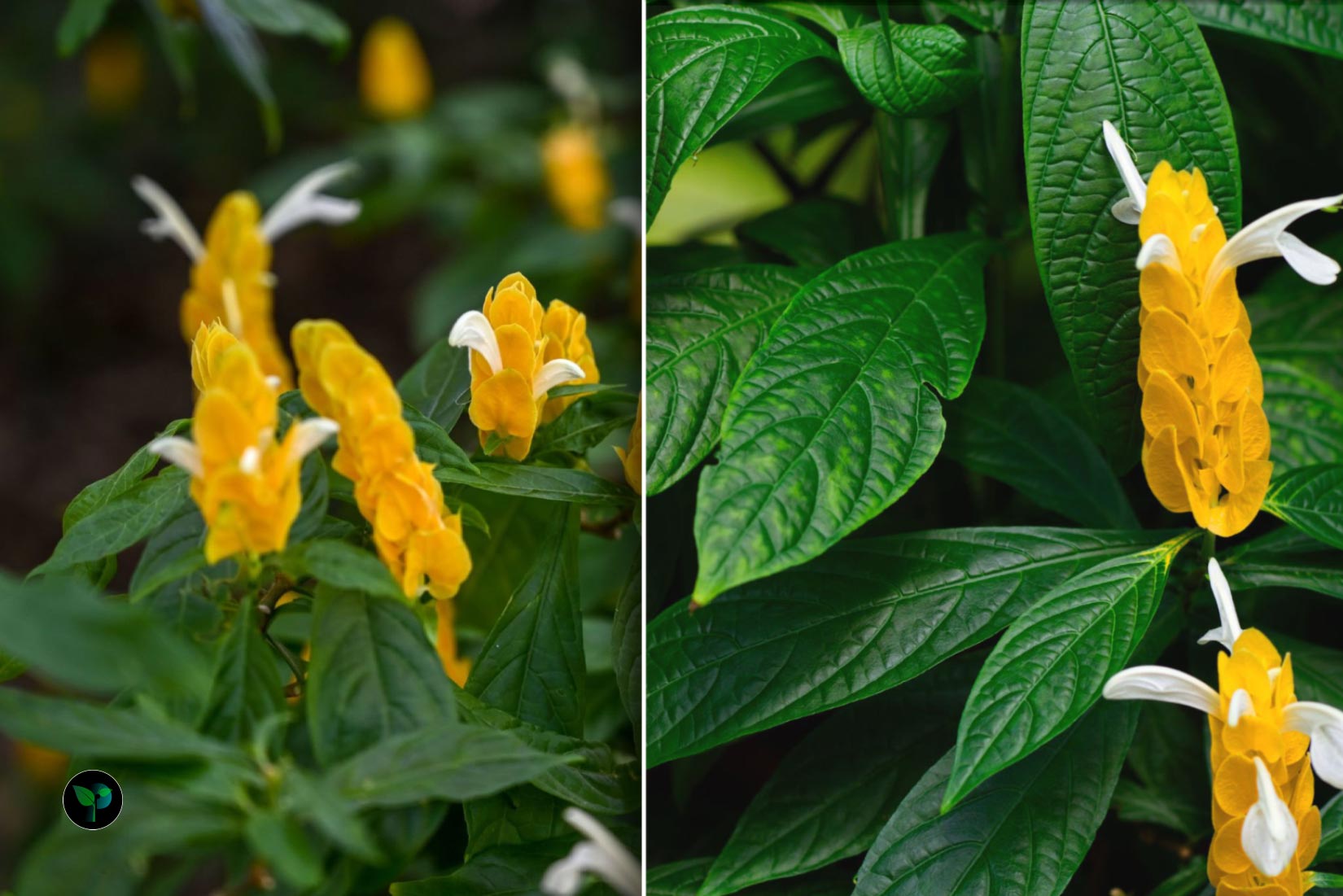Hello, Plant Lovers!
Step into the magical realm of Plants Folder, where every leaf tells a story and every bloom whispers secrets of nature’s wonder. Today, we’re unveiling a new chapter in our botanical journey, one that centers around a plant that’s as intriguing as it is captivatingly named the Lollipop plant. Join us as we uncover the allure and mystique of this remarkable plant and delve into its fascinating history and cultural significance. Get ready to be inspired, delighted, and amazed by the beauty that nature has to offer—right here at Plants Folder.
The term “Lollipop plant” is commonly used to refer to the Pachystachys Lutea, which is a tropical plant known for its unique flowers and foliage. Let me give you a little botanical tour!

Lollipop Plant (Pachystachys Lutea)
Appearance
This plant is named for its flowers, which resemble lollipops or drumsticks. The bright yellow bracts surround the tubular white flowers, giving them a candy-like appearance.
Foliage
The plant has broad, dark green leaves that complement the striking flowers.
Habitat
Native to Central America, the Lollipop plant thrives in warm, humid climates but can also be grown indoors in pots.
Care
It prefers bright, indirect light and consistent watering to keep the soil moist but not waterlogged. Regular fertilization during the growing season can promote healthy growth and blooming.
Benefits of the Lollipop Plant
The Pachystachys Lutea offers more than just its charming appearance. Here are some of the benefits of having this tropical beauty in your home or garden:
Air Purification
Like many houseplants, the Lollipop plant can help improve indoor air quality by removing toxins such as formaldehyde and benzene, promoting a healthier living environment.
Visual Appeal
With its vibrant yellow bracts and unique lollipop-like flowers, the Lollipop plant adds a splash of color and tropical flair to any space, making it a visually appealing addition to your home or garden.
Low Maintenance
This plant is relatively easy to care for, making it suitable for both experienced gardeners and beginners. With the right conditions—such as bright, indirect light and consistent watering—it can thrive indoors or outdoors.
Stress Reduction
Taking care of plants, also known as horticulture therapy, can have a calming effect and help reduce stress and anxiety. The presence of the Lollipop plant can contribute to creating a soothing and relaxing atmosphere.
Educational Opportunities
Growing and caring for plants like the Lollipop plant can be a fun learning experience, especially for children. It offers a hands-on way to learn about plant life cycles, biology, and the importance of environmental conservation.
Aesthetic Value
Whether used as a focal point in a garden or as a decorative element indoors, the Lollipop plant can enhance the aesthetic appeal of your living space, adding a touch of nature’s beauty.
So, if you’re considering adding a Lollipop plant to your collection of green friends, you’re not just getting a pretty plant—you’re bringing in a host of benefits along with it! Feel free to ask if you want more details or tips on caring for your Lollipop plant.
How we can consume lollipop plants?
it’s important to note that it is primarily grown for ornamental purposes and not for consumption. The plant’s flowers and foliage are not typically consumed as they are not cultivated for culinary use.
Some Important Points:
Non-Edible
The Lollipop plant is not considered edible, and consuming any part of the plant, including the flowers or leaves, is not recommended.
Toxicity
It’s crucial to be aware that some ornamental plants, including the Lollipop plant, may be toxic if ingested. To prevent any potential harm, it’s best to avoid using the plant for consumption.
Alternative Uses
While the Lollipop plant is not meant for eating, its primary value lies in its visual appeal and decorative qualities. It’s best enjoyed as a beautiful addition to your indoor or outdoor space.
Safety Note
If you have any specific concerns about plant toxicity or if you suspect that a person or pet has ingested any part of a plant, it’s important to seek immediate medical or veterinary attention as applicable.
Safety Notes for Lollipop Plants:
Toxicity
Lollipop plants are generally safe and non-toxic to humans and pets. However, it’s always a good idea to keep them out of reach of small children and pets to prevent them from ingesting any parts of the plant.
Pruning
While pruning your lollipop plant to maintain its shape and size, be cautious with sharp gardening tools to avoid injury. Wear gloves to protect your hands from any thorns or sharp edges.
Sunlight and Water
Lollipop plants thrive in bright, indirect light and require infrequent watering. Overwatering can lead to root rot, so ensure proper drainage in your plant’s pot.
Pests
Keep an eye out for common plant pests like mealybugs, spider mites, and aphids. Regularly inspect your lollipop plant for any signs of pest infestations and treat them promptly to prevent damage to the plant.
Potting Mix
Use well-draining soil for your lollipop plant to prevent waterlogging, which can lead to root issues. Consider repotting your plant if it outgrows its current container to ensure proper growth.
Temperature
They are sensitive to cold temperatures and frost. If you live in a colder climate, bring your plant indoors during the winter months to protect it from chilly temperatures.
Fertilization
Avoid over-fertilizing your lollipop plant, as this can cause nutrient imbalances and harm the plant. Use a balanced fertilizer diluted to half-strength during the growing season.



Leave a Reply